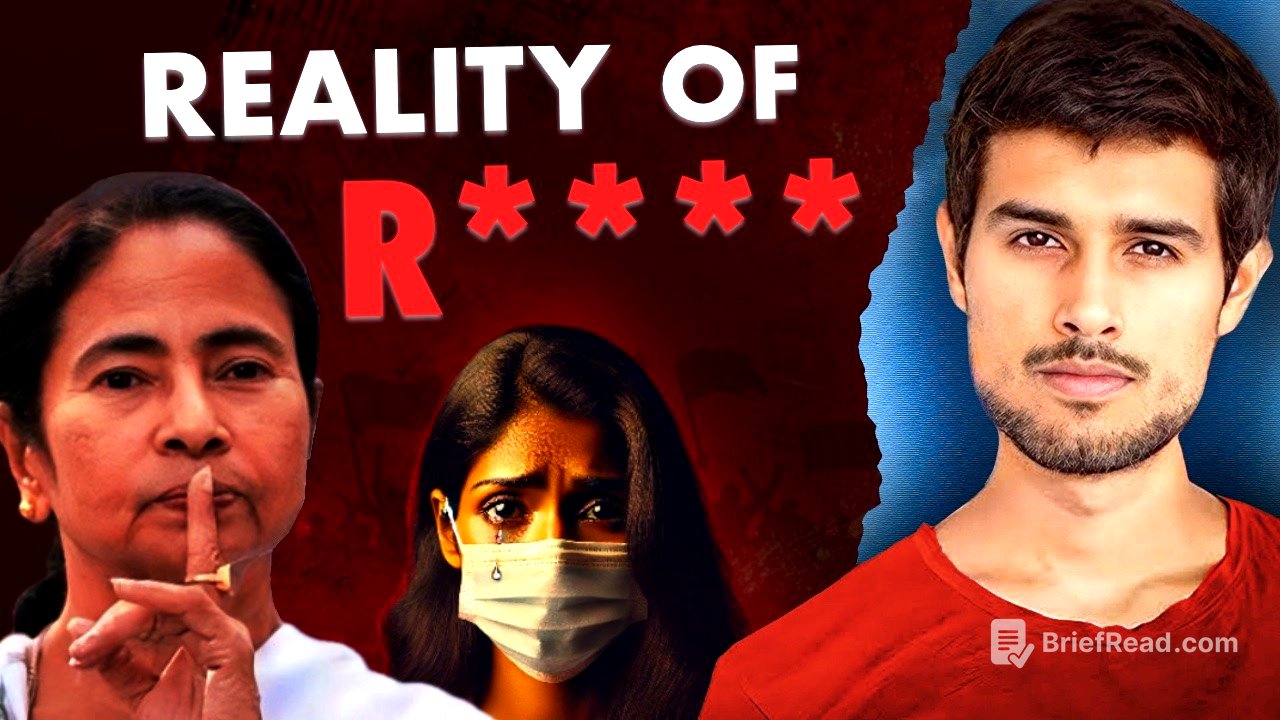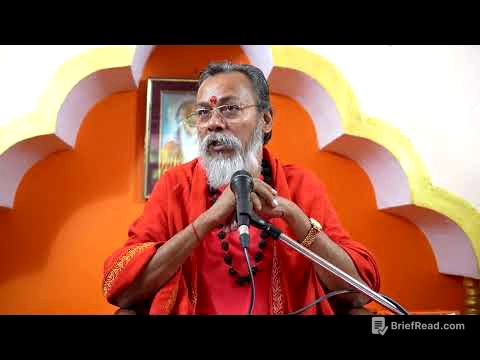TLDR;
This video addresses the alarming prevalence of r@pe in India, highlighting the societal attitudes and conditions that contribute to this heinous crime. It examines specific cases, discusses the root causes of r@pe, and proposes solutions involving education, legal reforms, and a change in societal mindset to combat r@pe culture and promote women's safety and equality.
- The video starts by discussing the recent r@pe case of a trainee doctor in Kolkata and the subsequent protests.
- It explores the various conditions and justifications people use to excuse or downplay r@pe, such as victim-blaming, political affiliations, and societal norms.
- The video identifies the root causes of r@pe, including child abuse, exposure to p0rn0graphy, and a lack of empathy and remorse among r@pists.
- It emphasizes the need to address r@pe culture, toxic masculinity, and patriarchal attitudes to create a safer and more equitable society for women.
- The video proposes solutions such as education, legal reforms, and a change in societal mindset to combat r@pe and promote women's safety and equality.
Introduction: The Kolkata Incident and National Outrage [0:00]
The video begins by addressing the r@pe and mu₹der of a 31-year-old trainee doctor in Kolkata, which sparked national outrage and protests. The police arrested 25 people, including the main culprit, Sanjay Roy, a civic volunteer with a history of domestic violence. Questions arose about how Roy had access to all hospital departments and why a person with such a background was recruited. The Calcutta High Court ordered the case to be handed over to the CBI, citing a lack of trust in the state police, which was seen as a failure of Chief Minister Mamata Banerjee, who also holds the Home Minister and Health Minister positions. The principal of R.G. Kar Medical College, Sandeep Ghosh, was accused of corruption and trying to suppress the matter, leading to his removal and an ongoing investigation.
The Pervasive Nature of R@pe and Lack of Outrage [3:20]
The video highlights that r@pe incidents are a daily occurrence in India, but they are not always reported or met with widespread outrage. The video references large-scale protests following the Nirbhaya case in 2012, the Hyderabad case in 2019, and the Hathras case in 2020, noting that these instances of public outcry are infrequent despite the consistent prevalence of r@pe. Statistics from the NCRB indicate that r@pe cases have increased from approximately 25,000 per year in 2012 to 31,000 in 2022, which is about 85 r@pe cases per day. This increase outpaces the country's population growth, suggesting the situation is worsening. The video questions why society seems to accept this reality for most of the year, only protesting sporadically.
Societal Attitudes and "Conditions" Applied to R@pe [7:21]
The video explores how societal attitudes often apply "conditions" to the wrongfulness of r@pe, creating a complex and problematic landscape. Examples include the r@pe threats against Nupur Sharma for her objectionable statements and Audrey Truschke for her historical interpretations. The video also addresses the release and welcoming of Bilkis Bano's convicted r@pists, the silence surrounding Prajwal Revanna's s€xual exploitation of women, and the parole given to convicted r@pist Gurmeet Ram Rahim. Additionally, the video mentions politicians like Brij Bhusan Singh and Kuldeep Sengar, who received support despite accusations of s€xual offenses. This illustrates how political opinions and personal views often overshadow the condemnation of r@pe.
Victim Blaming and Insensitive Statements [10:35]
The video addresses how victim blaming and insensitive statements contribute to the problem. It cites instances where victims are blamed for having romantic relations with the accused, being out late at night, or having a "loose character." The video debunks the idea that being in love justifies r@pe, emphasizing that r@pe is a violation of freedom and requires consent, which can be withdrawn at any time. It also points out the absurdity of blaming victims for their clothing choices or activities, as r@pe occurs regardless of these factors. The video highlights that in most cases, the accused is someone close to the victim, such as a family member, friend, or neighbor.
The Myth of S€xual Urge and the Reality of R@pe [18:06]
The video challenges the common misconception that r@pe is driven by s€xual urge, debunking the idea that r@pists are simply overcome by uncontrollable passion. It explains that r@pe is not about s€x but about power, anger, and sadism. R@pists are categorized into three types: Power r@pists, who seek to feel in control; Anger r@pists, who are abusive and violent; and Sadistic r@pists, who derive pleasure from the suffering of others. The video emphasizes that these desires stem from various factors, including child abuse, exposure to p0rn0graphy, and a lack of empathy.
The Role of R@pe Culture, Toxic Masculinity, and Patriarchal Attitudes [21:19]
The video explores the concept of r@pe culture, which normalizes or trivializes r@pe through mass media, societal attitudes, and traditions. Examples include comedic portrayals of s€xual assault in films and stand-up comedy, as well as the use of vulgar language and insults that normalize s€xual violence. The video also discusses toxic masculinity and patriarchal attitudes, which contribute to the objectification and dehumanization of women. It cites examples of objectification in ads, songs, and movies, where women are portrayed as inferior or as mere objects of desire.
Solutions: Addressing Root Causes, Societal Attitudes, and Material Conditions [24:41]
The video proposes a multi-faceted approach to combat r@pe, addressing the root causes, societal attitudes, and material conditions that contribute to the problem. It calls for the removal of root causes through women empowerment, education, improved employment conditions, and s€x education in schools. The video emphasizes the need to eradicate insults targeted at women and to call out s€xist attitudes in media and society. It also stresses the importance of strengthening law and order, filling police vacancies, and ensuring police independence from political interference. The video concludes by urging viewers to share the video and work together to create a safer and more equitable society for women.









